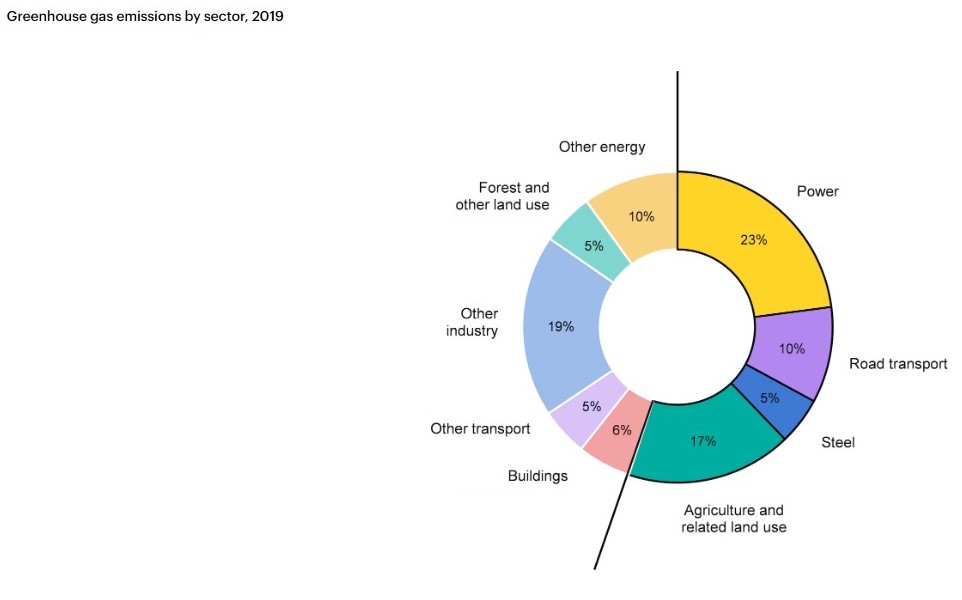The Breakthrough Agenda Report 2022 is a new report by the International Energy Agency (IEA), the International Renewable Energy Agency (IRENA) and the UN Climate Change High-Level Champions, focused on supporting stronger international collaboration to drive faster reductions in global greenhouse gas emissions.
According to the report, international collaboration will be critical to success, given the global scale and fast pace of change required.
Action by governments and businesses individually is necessary, but not sufficient. Well-targeted international collaboration can make low carbon transitions faster, less difficult, and lower cost
the report explains, and adds that “by aligning and coordinating actions internationally, countries and businesses can accelerate innovation, create stronger signals for investment and larger economies of scale, and establish level playing fields where needed to ensure that competition is a driver of the transition, and not a brake. International assistance, finance, and the sharing of best practice can support widespread adoption of effective policies and available technologies.”
Priorities for strengthened international collaboration
Stronger international action on two fronts is essential: countries and companies should coordinate measures to move away from production based on unabated fossil fuels in sectors where hydrogen is already used, and share best practice in deployment in new applications for hydrogen such as steel, shipping, and energy storage.
The number and geographical distribution of demonstration projects should be increased, along with deeper sharing of learning, and should be backed by targeted technical and financial assistance. This will be important to make hydrogen solutions available and affordable for more countries at an earlier date.
International efforts to agree safety, operational and emissions standards should be accelerated, since these will be critical to enabling widespread deployment and trade.
- Hydrogen production and use accounts for around 0.9 GtCO2 of emissions, or 1.5% of total emissions.
- Renewable and low carbon hydrogen production currently accounts for less than 1% of total.
- Targets and commitments to use low carbon and renewable hydrogen are equivalent to 3% of current total hydrogen demand.
- 15% of ammonia and 28% of methanol is internationally traded.

Putting the world on track to meet the Paris goals
As the report notes, countries and businesses should work together in each emitting sector to increase the chances of meeting the Paris Agreement goals, in line with the Breakthrough Agenda commitment.
There are likely to be significant opportunities for well-targeted international collaboration to accelerate low carbon transitions in sectors beyond the five discussed in detail in this report, such as in buildings, cement, shipping and aviation
Action in each sector can support progress in others, for example by scaling up the deployment of clean technologies and reducing their costs. International collaboration is of course an addition to, not a replacement for, the necessary action by individual countries and businesses.
What is more, a coordinated international deployment of low carbon infrastructure is also necessary, including electricity interconnectors, hydrogen gas pipelines, and refuelling or recharging facilities for shipping, aviation, and heavy-duty vehicles. This “can increase the availability of clean energy and the feasibility of decarbonisation.”
Scaling up hydrogen
Regarding hydrogen, the report highlights that governments and companies should work together to dramatically increase the number and geographical distribution of hydrogen demonstration projects and to ensure that these appropriately cover each of hydrogen’s high-value end use sectors, including maritime shipping, heavy industry, and long-duration energy storage.
Governments and the private sector should agree on principles to guide a deeper and more rapid sharing of knowledge from these demonstrators, including a commitment to share the lessons learned from all publicly funded projects. Doing so will help overcome technology availability barriers and accelerate the pace of deployment in multiple regions in parallel
EXPLORE MORE AT Iea’S REPORT ON accelerating decarbonization






























































